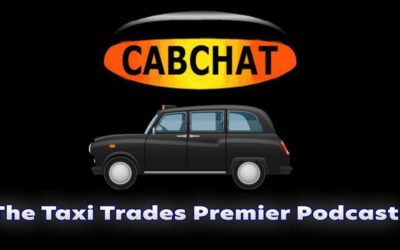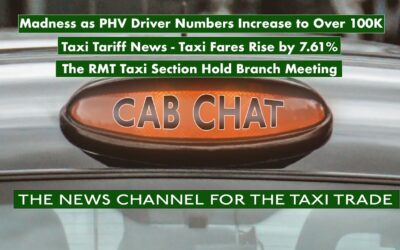Without good drivers, the quality of the service is going down’
Uber slashed fares in Washington D.C. two weeks ago in another attempt to get their app onto every phone they can and edge out “Big Taxi.” If you only read the Washington Post, you’d think that D.C. is an Uber driver’s paradise chock full of literal puppies, and that the fare cuts were a gift to Capitol Hill from the beneficent Travis Kalanick himself.
Uber drivers are telling a very different story. A number of drivers we spoke to—some who we reached out to, some who got in touch with us after seeing our previous reporting—say that the fare cuts are scorched-earth warfare tactics that sacrifice great drivers on the altar of competition.
Uber’s argument for the fare cut is simple: Winter is slow, and fewer people are downloading the app. Cutting fares brings more customers, and new customers makes more work available to Uber drivers.
“The point of the price cut is to increase demand and efficiency,” Taylor Bennett, Uber’s D.C. representative, told the Observer. “When drivers finish a trip, there is automatically a new demand or new request, as opposed to driving across the city. It increases the efficiency, and therefore earnings increase.”
But the drivers say that the price cuts just have them hustling to work harder for less money—that the fare decrease is really about undercutting Uber’s competition at any cost, and that the Uber drivers even considered striking.
Cut Short
Uber claims that decreased fares lead eventually to more riders, and therefore more overall earnings, but that math doesn’t account for drivers having to work much harder for their money. For instance, the chart below was emailed out to drivers to tell them not to worry about the fare cuts:
Look, earnings went up 12 percent! But a closer look reveals that what really happened is that drivers increased their productivity by 45 percent for only a couple of extra dollars—a marginal increase in pay for a substantial increase in work. Uber drivers we spoke to say that previous cuts had them taking on fares they normally wouldn’t just so they can keep up with falling earnings.
Another problem is that because cab fares are relatively cheap in D.C.—many UberX rides run as cheap as five bucks, which is unheard of in NYC—margins are much lower. Uber drivers have to maintain their cars and pay for gas, and tips are automatically factored into ride price.
“So if you accept a ride, and you’re stuck in traffic, let’s say it comes out to six dollars,” one rider told the Observer. “Then, Uber takes one dollar for safety, so it comes to four dollars. So then you have to make 10 trips to make 40 dollars. Then Uber takes 20 percent.”
Two drivers we spoke to said that riders they’d driven around were bewildered about the cuts, even expressing worry about the drivers.
“The people that I pick up are like, ‘We never complained about the prices,’” another driver, who we’ll call Vinnie, told the Observer. “They don’t understand. They don’t even want it to be too cheap.”
So why would they make the fare cuts if riders aren’t asking for them in the first place? The drivers say that it’s all about undercutting the competition. Uber, Lyft and Gett have constantly been trying to outbid each other in a vicious, well-documented race to drive the other out of business. In order to protect the riders from going broke, Uber has a guarantee program that reimburses Uber drivers for lost wages.
“But wait,” we hear you asking, “shouldn’t the guarantee program make it easy for drivers to stay afloat?” Not exactly.
Safety Net
The first problem with the guarantee program is that it’s hard to qualify for it, and it has stipulations that keep drivers on their toes. One rule is that you have to accept and complete nine out of ten rides. If you have a shift where you complete eight rides in a few hours, but had to cancel on one of them, you don’t qualify for your reimbursement anymore. Also, you need to complete at least one ride per hour. If you work an eight-hour graveyard shift, but only finished seven rides, you’re out of luck again.
“It’s important to realize how Uber works. Guarantees are used as a way to ensure supply when there’s not as much demand, and as a way to reduce concern about cuts. Most of the time, there are no guarantees in place. This is an attempt to reduce risk,” Zuhairah Washington, Uber’s general manager in D.C., the Observer. |
The next issue is that ultimately, the guarantees don’t fully make up for the losses from the cuts, and when they do, it’s just barely. Uber is only willing to reimburse drivers up to a certain amount of average earnings which fluctuates between $16 and $26 dollars per hour depending on the time of day.
One driver said that after a 100-ride week after the fare cuts, he took home less money than he had on other 50-ride weeks before the cuts.
“So those drivers in Chicago that were driving so much more for a only a couple of extra bucks, they’re doing that with the guarantees in place,” Vinnie said, referring to that chart from earlier. “So if the guarantees were not there, then there would have been a nasty loss—more than two or three dollars.”
Finally, those guarantee programs disappear, even when the fare cuts remain permanent. The last time fares were cut and a similar guarantee program was put in place, the safety net was pulled away in less than a month. Chicago might be a single example of success, but the D.C. drivers said they’d just come to expect a new, lower standard of pay.
Uber’s general manager in D.C., Zuhairah Washington, insists that the guarantees aren’t just some way to “game [drivers] to make more money.”
“It’s important to realize how Uber works,” Ms. Washington told the Observer. “Guarantees are used as a way to ensure supply when there’s not as much demand, and as a way to reduce concern about cuts. Most of the time, there are no guarantees in place. This is an attempt to reduce risk.”
As for the drivers hustling harder for only a little extra cash, Uber has their own spin on that narrative. If you look, for example, at that chart of productivity vs. earnings, Uber says that the increased productivity isn’t actually a reflection of drivers working harder. Instead, Uber insists that the average number of rides goes up because there are so many new customers, and drivers aren’t waiting around as long for their next ride.
The Uber representatives we spoke to repeatedly stressed that there was no hard end date for this guarantee program, and Ms. Washington suspects about 90 percent of drivers eventually make enough money that they can remove the guarantees without drivers suddenly making less.
“As opposed to letting partners take that risk themselves, we take the risk so that there’s a floor for their earnings,” Ms. Washington said. “We use guarantees in this way whether or not that floor will be met. Once we’ve focused on making expectations, those guarantees are no longer in place.”
But the drivers are skeptical—even if 90 percent of them do make the cut, they can’t know if they’ll be in that 90 percent, or when the rug might suddenly be pulled out from under them. What’s worse, they feel like no one is hearing their complaints.
No one in sight
Uber drivers who feel stranded by the company have little recourse when dealing with these kind of messy new policies, mainly because they feel they have no one to turn to. Uber drivers can sign up and begin driving for Uber without ever going into the main offices, and we spoke to several drivers who had never met someone from the company.
One D.C. driver told us that he was shocked when Uber announced that service was starting in Virginia, for example, because he’d already been giving rides in the state—no one had told him Virginia, where many drivers live and work, was out of bounds. And though Uber is diligent about making sure drivers have their cars inspected and insured, no driver we spoke to has ever had an Uber employee take a look at their vehicle to inspect it or make sure the drivers are being truthful about what vehicle they’re driving.
“I could take the device they gave me for getting rides—but drive any car—and they wouldn’t know,” one driver told the Observer. To do so, of course, is strictly against Uber’s policies.
“The concept is amazing, and it helps everybody,” one driver said. “But the way Uber is going about it is very unethical and manipulative. The drivers are just getting screwed over, and you don’t really feel valued. There’s no feeling of pride, or a feeling of belonging to an organization.” |
If a driver has a complaint, questions about his employment or even an on-road emergency, the only option that driver has is to send an email. No driver we spoke knows of a phone number or hotline that they can call. Their best bet, if they urgently need to talk to someone, is to sit tight and wait for a call if they really need one.
“As a partner, or employee or whatever you call me, I expect to be able to have a backup,” another driver—let’s call him Trevor—told us. “It’s a multibillion dollar worldwide company. At least hire some people to just answer the questions of the drivers. Put them in an office somewhere, at least so you can feel comfortable, you know? But Uber never asks for your opinion.”
Granted, the staff that answers those emails is available 24/7—the Washington D.C. team boasted to us about their quick response time, and in one email exchange we saw, a response came back to a driver’s elaborate query in six minutes. But drivers feel like they’re dealt with flippantly, and told they can come in and visit, or just quit if they want to.
“When they email you, they simply copy-paste a policy and send that,” Trevor said. “That’s absurd.”
As for when these new policies like the new guarantee program pop up, the drivers say that there’s no dialogue or representation. They simply start up their app, see that there is a new set of terms and agreements, and agree. The alternative? They can always quit.
Stockholm Syndrome
For all that Uber puts their drivers through, one of the things that took us aback in our conversations with them was their unanimous loyalty. Each driver we spoke with insisted, at some point, that they admired Uber as a company and that ride-sharing is the way of the future. Many of them love providing such a useful service to people whose lives are made safer or more efficient for Uber.
One driver—as surreal as this may sound—told his wife that no matter how rich he becomes doing any kind of work, he’ll always want to be an Uber driver because he loves going out into the city to meet new people and help them get around. Uber drivers we’ve spoken to, both in D.C. and in New York City, love the flexibility and excitement of being an Uber driver: the freedom to work whenever they want, the ability to roam around and the people they meet along the way.
They want to keep being Uber drivers. They just wish they felt like they mattered to Uber as much as Uber meant to them.
“The concept is amazing, and it helps everybody,” Vinnie said. “But the way Uber is going about it is very unethical and manipulative. The drivers are just getting screwed over, and you don’t really feel valued. There’s no feeling of pride, or a feeling of belonging to an organization.”
The drivers know about Uber’s new role as a pseudo-villain in the news cycle. They watch the news about Uber, read about the lack of company oversight, along with the playbook for sabotaging Lyft. They organize in forums and Facebook groups to dish about their jobs, share their ratings, voice concerns and, occasionally, plan action.
Recently, Vinnie pulled alongside another Uber driver in a parking garage and asked if the driver was interested in going on strike with him. The other driver shouted back that he would love to—he’d heard of drivers striking in other cities. Vinnie got his number. But there’s been no headway on a strike. Deep down, every driver knows that Uber could replace any casualties in the war against Lyft and other ride-share services. Vinnie could spend weeks organizing a hundred drivers into striking, and hundreds of willing candidates would show up to replace him.
But as Trevor points out, D.C. isn’t just any city. It’s full of politicians, businessmen and the wealthy—a class of people who demand a certain level of service. If Uber were to lose a certain class of drivers for cheaper stand-ins, it risks further hurting its reputation as a safe, reliable service.
“The riders are the reason everyone is making money, but the drivers are the ones that are making this business happen,” Trevor said, “Without good drivers, the quality of the service is going down.”
Source: The Observer







